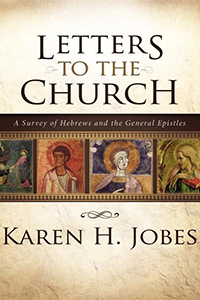While Paul was in Rome, there is some evidence he was released and afterward wrote his epistles to Timothy (1 Timothy) and Titus. After about 63 A.D., Paul was reportedly released from his first Roman imprisonment. Upon his release, he travels East before pressing on to new territories. His objective was to visit churches on the Eastern side of the Aegean. If he were released, he would have made it farther West to Spain, and this would have been the time to have reached the farthest extent of the known world with the gospel (Matt 28:19-20, Mark 16:15). Possibly setting out to Spain in 64 A.D., he left Timothy at Ephesus and Titus at Crete. Upon rearrest around 67 A.D., he is subject to execution from Roman imprisonment, and he summons Timothy. After Paul’s first release from prison, there is significant effort to explain what he did. There is some theory that he wasn’t released from Roman imprisonment at all (i.e., “stricter confinement” from libera custodia; Paul: Apostle of the Heart Set Free, Bruce, 444).
Among a fragmented range of speculation about Paul’s historical travels (2 Tim 2:23), there is a puzzling sense of reason to reconstruct Paul’s whereabouts and his meta-narratives for delivery to the churches after the first imprisonment that doesn’t concern the substance of his message among the pastoral epistles. Historical records from Clement or Eusebius do not provide clear and concise detail to stitch together where Paul was before a rearrest, or the relevance of that was (other than to indicate 2 Timothy was written during the second imprisonment: Eusebius Hist. Eccl. ii. 22.2). There is a lot of equivocation, such as “maybe” or “could be” or “might have” to settle upon evidence of what he did. Meaning, it is merely theory that Paul wrote from release or exile (1 Clem 5:6), between a first and second Roman imprisonment (Bruce, 444-445). Paul’s writing of the pastoral epistles (1 Tim, 2 Tim, Titus, and Philemon) doesn’t explicitly indicate an exoneration or acquittal from Roman justice as he was incarcerated in Rome the first time.
As Paul wrote to the churches through Timothy and Titus, he gave specific instructions to their formation, order, and discipline. Toward that purpose, Paul quoted Epimenides (6th-century BC philosopher and religious prophet) in Titus 1:12. Much earlier on in the Bruce text (Bruce, 242), it is clear that Paul elaborates upon the context of “The Cretans, always liars, evil beasts, idle bellies!” or more explicitly from Titus 1:12b, “Cretans are always liars, evil beasts, lazy gluttons.” Before the Athenians, Paul places upon them the problem of self-reference in logic, which renders to the reader or listener a self-referential incoherence as it concerns the messaging and credibility of pagan philosophy or the Cretan prophet Epimenides. The Cretan prophet Epimenides declared all prophets as liars when such a statement was self-defeating. As such, that statement was written to the letter to Titus as a way to highlight the line of thinking about Cretans who called attention to their own prophet (who also declared Cretans as liars) as credible. Instead, they were empty talkers, deceivers, and the rebellious that Titus was to guard against while in Crete.
Paul quotes the pagan Greek writers to bring attention to the perils of entrusting the early church to those who were treacherous in thought and conduct. Warnings against those who would instruct believers of the early church lived dishonorable lifestyles inconsistent with Pauline instruction—especially concerning the gospel and the truth of what that means in terms of new covenant hope and instruction. To make room for errant thoughts and philosophies of false teachers was rejected as specific writings of Greco-Roman culture otherwise held in regard as having authority.
To both Timothy and Titus, Paul produced listings of qualifications for elders. The listing given to Titus was shorter than to Timothy. Of believers, Paul has great concern that they should produce the fruits of the Spirit in their own lives. Namely, as a foundation of elders, at a minimum, there should be qualities to include love, patience, gentleness, meekness, and self-control. The character qualities of Christ must be evident among converts who were to grow in maturity. The fruits of the Spirit were a baseline among believers converted as a bedrock of what members of churches were to live by.
The state of development among churches on Crete with Titus or at Ephesus with Timothy differed as a function of where believers were in their faith walk. Moreover, social conditions that placed pressures upon the churches in each region were unique and required attention as to their needs. Concerning situational circumstances, the regional Church becomes developed through formative instruction, producing an escalating value of service, worship, and gospel outreach. To achieve stability for foundational growth, the churches in Crete were at a different state of situational readiness, where Titus could assure and enforce its development according to the written instructions he obtained from Paul.
As Paul spent years in Ephesus with multiple visits and support from churches in the area, elders’ roles, responsibilities, and duties were likely more advanced toward their ministry charter, discipleship, individual care, and service of Christ and His people.
While Paul was imprisoned and wrote to the churches in Asia-minor, he had support from fellow workers of the gospel. Particularly during house arrest while in Rome, he had the help of Onesimus who was a derelict slave from across the Aegean. Onesimus’ obligation to Philemon, his master, was a serious matter that required attention. There were legal implications that threatened Paul as he kept a runaway slave in his company while in Rome. While Paul wrote his letter to Philemon concerning Onesimus, the runaway slave (Philemon 1:10-21), he was at some risk because he violated Roman law.
During Paul’s house arrest in Rome, his actions with Onesimus were self-acknowledged (v.11) while he was under Roman guard. And yet Onesimus was not only a runaway slave. He was harbored —a slave under the legal ownership to someone who had a claim to him as human property. As Onesimus was legally obligated to render service and work to his owner’s interests, he was of particular use to Paul instead during his imprisonment (v.11, cf Col 4:9). Paul attained beneficial human capital through Onesimus as he was a slave displaced from Philemon as a rightful owner. Paul gained Philemon’s time value of money vis-a-vis Onesimus for some time, and Philemon could have reported the matter to authorities.
From a Western cultural perspective, one could argue that Paul was in possession of stolen property. Onesimus, under his choice and free agency, made a series of decisions to leave his obligations and instead attend to Paul to some extent in support of his ministry and well-being. While in an apparent contradiction of interest, Paul’s letter to Colossae identifies Onesimus as a fellow ministry worker. Philemon was of the faith as well and treasured by Paul. Still, the apparent ethical concerns of displaced labor without Philemon’s consent had Paul concerned about Onesimus’ offenses, and the ministry, in general, could have been perceived as tainted or corrupt. It was an unwanted situation that carried perpetuated legal standing from a brother in Christ, and it had to be resolved.















